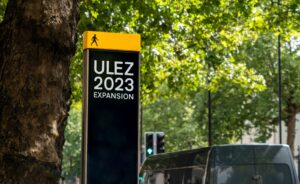A Europe-wide study has found that increasing tree cover in cities could dramatically reduce air pollution and save thousands of lives each year.
By analysing data from 744 urban centres across 36 European countries between 2000 and 2019, researchers discovered that boosting tree canopy coverage improves air quality and lowers death rates from pollution-related illnesses. particularly those linked to PM2.5, NO₂ and ozone.
On average, urban tree coverage across Europe is around 18.5%, with a great deal of variation between regions. Countries in the north, such as Finland and Norway, tend to have higher tree cover, while some areas in southeastern Europe, including parts of the former Yugoslavia, have much lower levels, partly due to deforestation during past conflicts.
The study went beyond simply mapping tree cover. Using high-resolution satellite imagery, the research team developed a detailed model which, when combined with long-term health data, allowed them to estimated how tree cover influenced air pollution and its health impacts over two decades.
Their findings show that even modest increases in tree canopy can make a significant difference.
They found that every 5% increase in urban tree coverage is associated with a reduction in PM2.5 by 2.8%, NO₂ by 1.4%, and summertime ozone by 1.2%.
The research suggests that if every city increased its tree coverage to 30%, an estimated 12,000 premature deaths could be prevented each year across Europe.
In 2019 alone, existing trees were already helping avoid nearly 25,000 early deaths. Eastern and southern European cities, which often suffer from higher pollution levels, stand to benefit the most.
However, the researchers point out that not all green spaces have the same impact. Tree species, urban layout, and regional climate all influence how effective trees are at filtering pollutants. In some dense cities or areas with water scarcity, reaching 30% tree cover may not be realistic without creative planning, such as targeting private gardens and rooftops.
Ultimately, the study makes a clear case for cities to prioritise urban greening. Trees are not just aesthetic additions to the landscape, they are life-saving infrastructure that can cut pollution, reduce heat, and build more resilient, healthier communities.
The full research can be read here.

















Leave a Reply